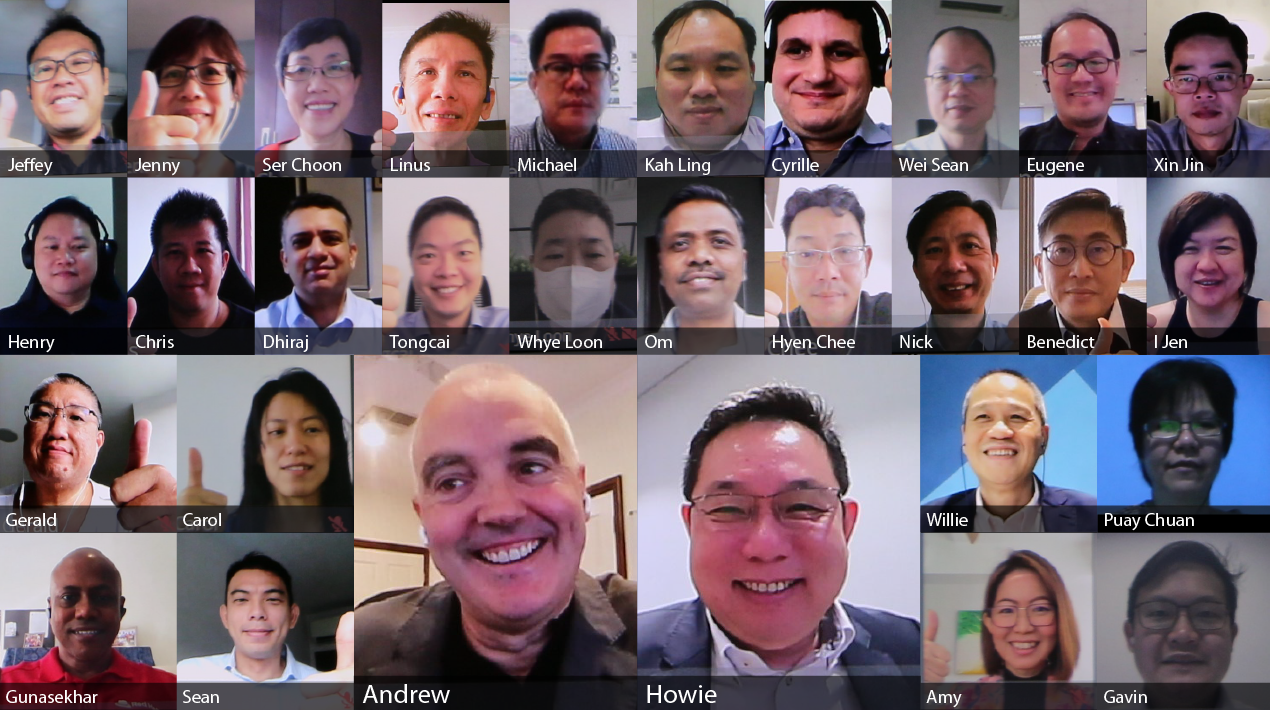
Around the world, organisations and enterprises are doubling down on digitalisation efforts to meet their customer or citizens’ needs and weather the impact of the ongoing pandemic. The “new normal” is driving businesses to accelerate their digital transformation initiatives to ensure that citizens and customers continue to avail of mission-critical services uninterrupted and seamlessly.
While this digital transformation encompasses people, processes and technology, it is the underlying technology that forms the foundation of a successful initiative. A big part of this shift is modernising IT environments and applications that span data centres, edge locations and public cloud. There is no better time than now to modernise IT operations. The need of the hour is to modernise the systems to keep pace with the new digital demands and deliver more effective and efficient public and customer services.
For leaders and decision-makers, there is so much to do, but so few hours and resources to do it. Along with the more routine activities such as monitoring, fine-tuning resource management and general maintenance, there are event-driven activities that are time-consuming such as troubleshooting, remedial work, and dealing with change requests. Additionally, they need to find the right balance between building their internal infrastructure and improving their business applications.
So, what is an overworked, overwhelmed IT leader to do in the face of all these decisions to transform their digital operations?
This was the focal point of the OpenGovLive! Virtual Breakfast Insight that aimed at imparting knowledge and strategies on how to transform digital operations and modernise IT operations to improve an enterprise’s s overall agility, visibility and response time.
Finding the Right Balance in Digital Operations

To kickstart the session, Mohit Sagar, Group Managing Director and Editor-in-Chief at OpenGov Asia delivered an opening address.
Mohit conceded that the ongoing challenge of enterprise, in normal times, is trying to balance technology, regulations, customers, employees and stakeholders in their operations all the time to perfection. Then suddenly, at the end of 2019, COVID-19 showed up and threw a major spanner in the works – changing everything from planning to execution in the months and years ahead.
There was wide consensus that digital transformation would be at the heart of these changes. But the truth is, these were, for the most part, just band-aid tech solutions. Upfront, initiatives appeared to be innovative due to the urgent necessities and solutions the new normal calls for. Moreover, the good-to-have become the must-have in the chaotic environment. Things in the past that that were deemed as non-essential expenses suddenly became critical investments. The 500-mile tailwind called COVID-19 pushed us beyond belief.
Words like “agile”, “DevOps”, “AI” and “cloud” became established strategies and panaceas. But the question remains, “Where does this go?” and should organisations and enterprises ask themselves, “How can we re-innovate?”.
Mohit answered with an emphatic yes! No doubt, the world adapted to the situation brought by the pandemic – employees worked remotely, meetings were virtual and business, shopping and entertainment transitioned online But this not necessarily mean that it is going to continue the same way in 2021 and beyond.
What it does mean is the need to innovate continuously. There has to be an ongoing push to provide inventive ways to deliver customer and citizen-centric personalised services from here on out. The world should not go back to old pre-pandemic practices; instead “re-innovate” should be the new mantra for society. By knowing and applying the lessons learned from the pandemic, customer and citizen satisfaction must become the forefront of all our initiatives going forward.
To do this, Mohit advised the delegates, organisations must look for partnerships and not try to do everything on their own. Connectedness and finding the ideal balance with strong leadership will ultimately lead to a true and lasting digital transformation.
Digital Inside and Digital Outside

The session proceeded with a presentation from Howie Sim, Vice President – Healthcare and Transport Client Service Unit, NCS on the four emerging technologies that defined digital transformation in the healthcare and transport sectors in 2019.
The preceding years witnessed a surge in the implementation of autonomous things – from devices, vehicles, and drones, etc. Businesses increasingly deployed automation for monitoring operational processes in real-time. Automation and data analytics complemented various programmes (now deemed as edge Intelligence).
However, as the devices and the endpoint become intelligent, the ability to interact with its backend becomes extremely vital to ensure the quality and security of outputs. In terms of security, Artificial Intelligence (AI) took prominence in ensuring the overall security posture of companies.
Fast forward to today, digital transformation has been seen an unprecedented acceleration because of COVID-19.
The “Digital Outside” or the adoption of digital technology in service provision, operations, inspection, surveillance, maintenance and simulations has increased. For example, in the healthcare sector, there was a rise in the number of fall detection systems in hospital wards, robotic nursing assistants and temperature scanning-access control lock-ins and mobile clinics. In the transport sector, digital technology and analytics were in social distancing enforcement, and mask detection efforts and drones were put in play for 3D tunnel mapping.
However, Howie emphasised, companies must consider improving their “Digital Inside” (the internal transformation and integration) at a similar speed as their “Digital Outside”. It behoves them to realise that their internal operations are as important as their external affairs. Companies must rethink and relook at their resources such as applications, infrastructure, service management, and security.
To close, Howie offered several ideas and services that could lead to better operational management. Utilising services like workspace automation, service management transformation, service desk transformation, hybrid cloud automation and service intelligence are just some of the ways companies can increase productivity, save time, and avoid costly disruptions.
Howie was firm in his belief that these technologies give companies the ability to focus more on the future of their businesses.
Interactive Discussion
 After the informative presentations, the session moved to an interactive discussion facilitated by polling questions. This activity is designed to provide live-audience interaction, promote engagement, hear real-life experiences and impart professional learning and development for the participants.
After the informative presentations, the session moved to an interactive discussion facilitated by polling questions. This activity is designed to provide live-audience interaction, promote engagement, hear real-life experiences and impart professional learning and development for the participants.
The discussion was led by Subramaniam Radhakrishnan, Principal Enterprise Architect, NCS, Andrew Bearsley, Senior Manager, ITOps Specialisation, Splunk, Willie Hui, Director, Solution Consulting, Asia, ServiceNow, and Sean Sim, Cloud Solutions Business Development, Singapore, Red Hat.
The opening poll inquired about the delegates’ top digital transformation enabler in their infrastructure modernisation. Just over a third (36%) said that hybrid or multi-cloud infrastructure is the enabler, another third (33%) went with application modernisation and the remainder was divided between software-defined infrastructure, DevOps and automation and AIOps.
A delegate from the public healthcare sector in Singapore said one of the biggest transitions for them is the move to cloud-based platforms. Much of their infrastructure that has their medical records was built onto server-based infrastructure hence the challenge of migrating to the cloud still exists.
On the question about automation and what delegates perceive as the top benefit of end-to-end automation, 33% said that productivity improvement is the top benefit when it comes to automating processes while 22% said the quality of services will be the end goal.
A delegate from the public sector said being able to automatically repeat a task without error is important in terms of productivity. Automation gives the organisation the ability to perform and give services consistently.
When asked how they would describe their current situation in IT service management, more than half (58%) of the delegates said their IT service managements are reactive to situations. About 19% said they treat IT as a service and another 19% said they see IT as a business enabler.
A delegate from the healthcare sector sharing her thoughts on the topic believes that IT is a service because she wants to get things done as efficiently as possible. Another delegate from the tech sector said that the service is still reactive because internally, they are still deploying new service management tools dedicated to solving end users’ problems. He believes that there is room to improve on proactivity rather than remaining reactive.
The delegates were what function of AI operations adds the most value to their organisation. Over 38% said the predictive analysis function provides the most value, while the other votes were divided into proactive analysis, preventive analysis and service intelligence dashboards.
A delegate from the tech sector said that a service intelligence dashboard can lead to efficiencies and better organisational operations.
Inquiring about the delegates’ near-term strategy in terms of modernising their IT operations, 42% said that service intelligence and AI ops are within their near-term IT strategies. Just over a fifth (21%) indicated that service management transformation is a top priority.
Continuing in the same vein, respondents were questioned about their biggest challenge in modernising IT operations. Just under a third (32%) organisational culture is the biggest hindrance, while 29% said the shortage of required skill sets is the problem, A quarter (25%) felt legacy IT systems prevent them from modernising their IT operations.
After seeing the results from the polling section and hearing several insightful ideas from delegates in attendance, the speakers shared their thoughts on the session’s agenda.
At the end of the day, Sean Sim opined, every organisation will face many challenges and it depends on where they are in terms of their overall IT operational infrastructure. Organisations must know, in terms of modernising operations, the challenges are not all about money but can also be about the shortages of skillsets and culture.
Having been in the business for over 30 years, Willie Hui, on the other hand, conceded, has seen that majority of services come from IT. And IT is the enabler of those services. However, when you look at the modernisation of operations, there are still a lot of challenges present. Organisations must simplify terminologies to educate the workforce that it is not just about the technological advancements, but more about the service and the experience that is given to customers and clients.
Subramaniam Radhakrishnan emphasised the need to change operating morale. To change this, organisations must recognise where they at right now and know how to change the culture of the people, Leaders must reach out to their organisation and explore ways to improve their operating morale, to act as an enabler for a completely digital operation.
Andrew Bearsley shared his thoughts on these modernised operational techniques. He believes that service intelligence can act as an insurance policy for businesses and enterprises. He conceded that if an organisation can see and predict everything, it helps mitigate risks, especially in the healthcare and transport sectors where there is a lot of digital transformation happening thus magnifying the need for risk mitigation.
Conclusion
The session concluded with a closing address from Howie Sim. He thanked the delegates and the speakers who shared their robust insights and experiences on the challenge of modernising organisational operations.
Howie stressed the idea that as organisations try to better the “digital outsides and insides”, they must also focus on the improvement of people. As they look to modernise digital applications and infrastructures, they must first recognise talent acquisition and retention efforts.
Programmes and processes are not just modernised for the sake of productivity. Instead, businesses modernise to catch up with the level of sophistication and talent that the next generation of workers is bringing in into organisations.
















